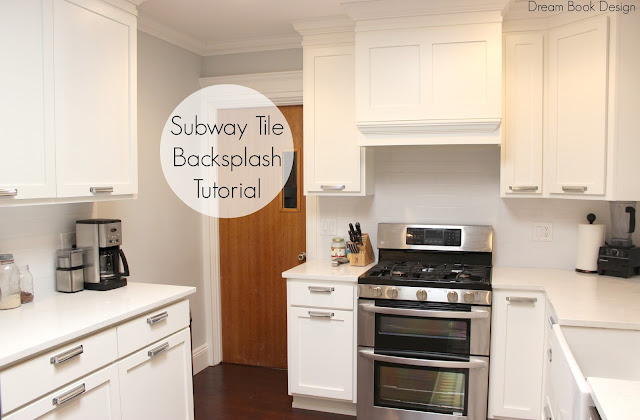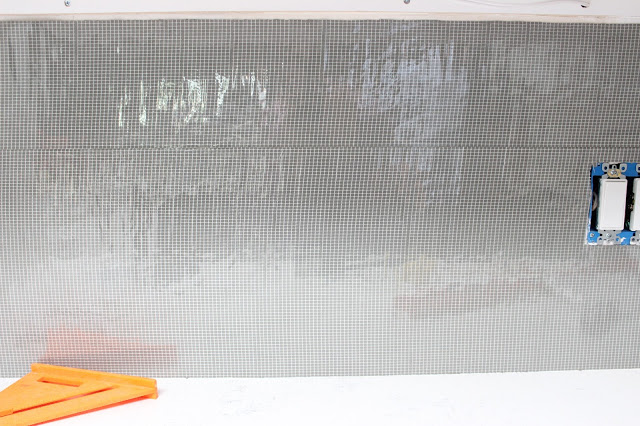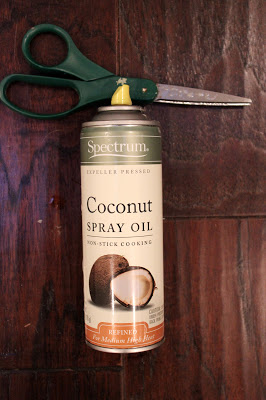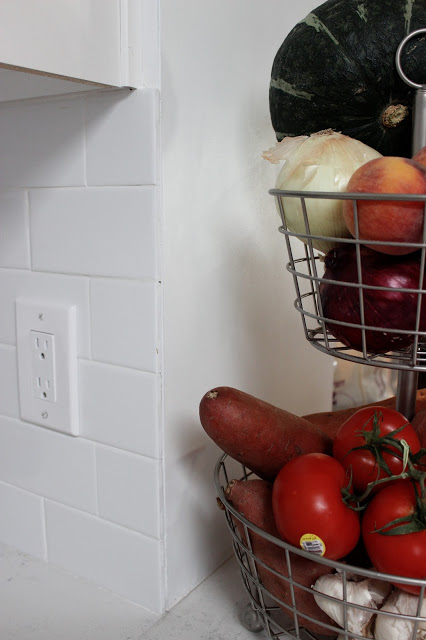You see- serious home improvement projects require you to be at least decent at math, and that my friends I.am.not. Don’t get me wrong, I know my way around any and all power tools, saws, etc. But thats because J has taught me. I would never feel comfortable tackling a whole room of crown on my own. Just being honest. So if you needed to paint your house (inside and out) I would go to a professional to make sure it’s done correctly! Like Lenny Martin Painting in Gresham, have a look around and see which painters will help you with your home project.
Installing this DIY subway tile backsplash though? This project I could have done on my own! Say what? Yup! It was that stinking easy! Heres how we installed our backsplash in one night. It went a little something like this: Put Bray to bed, clean up the hurricane of food covering the kitchen from him eating, pour ourselves a beer, and get started:)
| Just ignore that the Bondera is already up in this photo. The tiles were there first:):) |











Wow, you guys did a great job! Your kitchen looks beautiful!
Thanks Leah!
I love it! And you totally inspired me-I’ve been going back and forth for months on whether or not to hire someone or do it myself. Now I’m convinced that I can do it-I never even thought of how much easier it would be without spacers. Thanks for the great advice!
Omg Terri you can TOTALLY do it. I very rarely think I could tackle a ‘bigger’ diy project on my own without help from J, but this is so one I could have!! Good luck! Let us know how it goes.
It looks beautiful! I love your kitchen and was wondering if you could comment on your countertops. I remember you chose something I’ve never heard of before (Okite?). I would love to update my kitchen countertops and love the look of marble but am afraid to use it in my kitchen because of the pitting and staining. Are your countertops holding up as well as you thought they would? Any thoughts you want to share would be appreciated!
Heidi
Hi Heidi! I have actually been meaning to do a follow up on them. Ill give you some info though in the mean time. THEY ARE AMAZING. As in- I am super lazy and quite often use them as my cutting board, slicing up lemons veggies, etc. And I try to always leave them clean at the end of the night, but there are definite times where there has been citrus juice or red wine left overnight, and it wipes perfectly clean in the morning! The only time we had an issue was when I put a big box from Costco on the counter and didnt realize my pineapple was leaking juice. The ink from the box seaped on the counter and sat there for a few hours. The only way I was able to get all the dark blue ink off was using a little borax with a magic sponge. Now dont quote me on that, because im sure borax isnt ideal for the counter- but it looks good as new now! I LOVE them. Highly recommend! Check back next week, ill be putting up the whole post on them then!
Thank you Adrianne. Can’t wait to see your post!
Heidi
Where do you apply the caulk? Just along the bottom where the tile meets the counter?
Very nice tips and tricks! And thanks for demonstrating with pictures as well. Very useful, take care!
-Rocko Barbieri
Hi, there.
Thanks for the step-by-step and the great pics. A few questions remain for me though that I hope you won’t mind answering:
1. I assume the Bondera plus new tiles thickened the walls. How did that impact the electric outlets? And how did you adjust for it?
2. Now that it’s one and a half years later, how has your job held up? Did the heat from cooking weaken the tiles’ hold around the stove?
Thank you!
Hi Mary Ann,
The outlets are perfectly fine with all the tile and bondera..no issue at all.
The face plates are simply just on the outside of the tiles, as they would be normally.
The tiles are holding up perfectly, not one issue.
Thank you! You’ve inspired us. We just might try this one!
Yay- you will love it Mary Ann!!